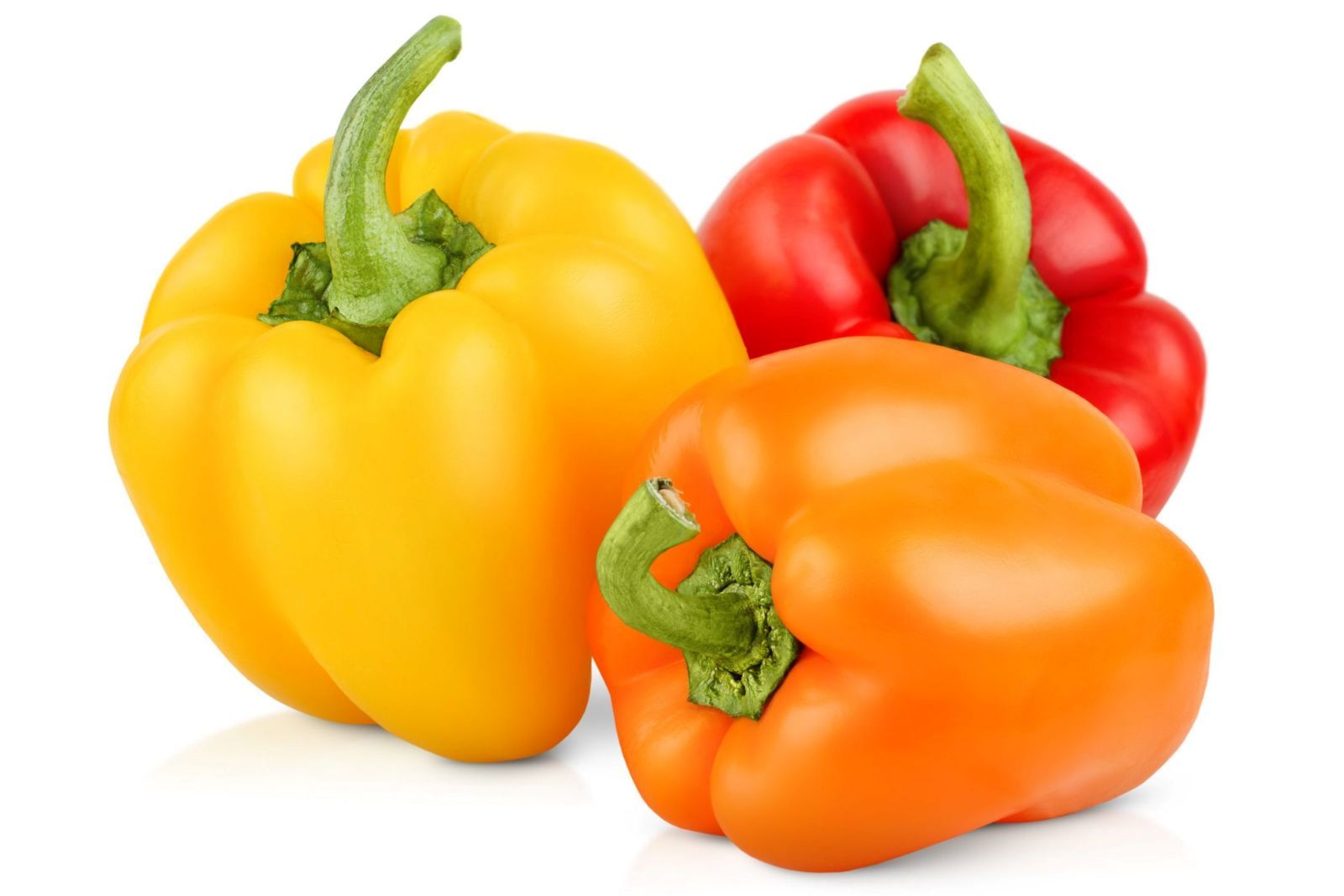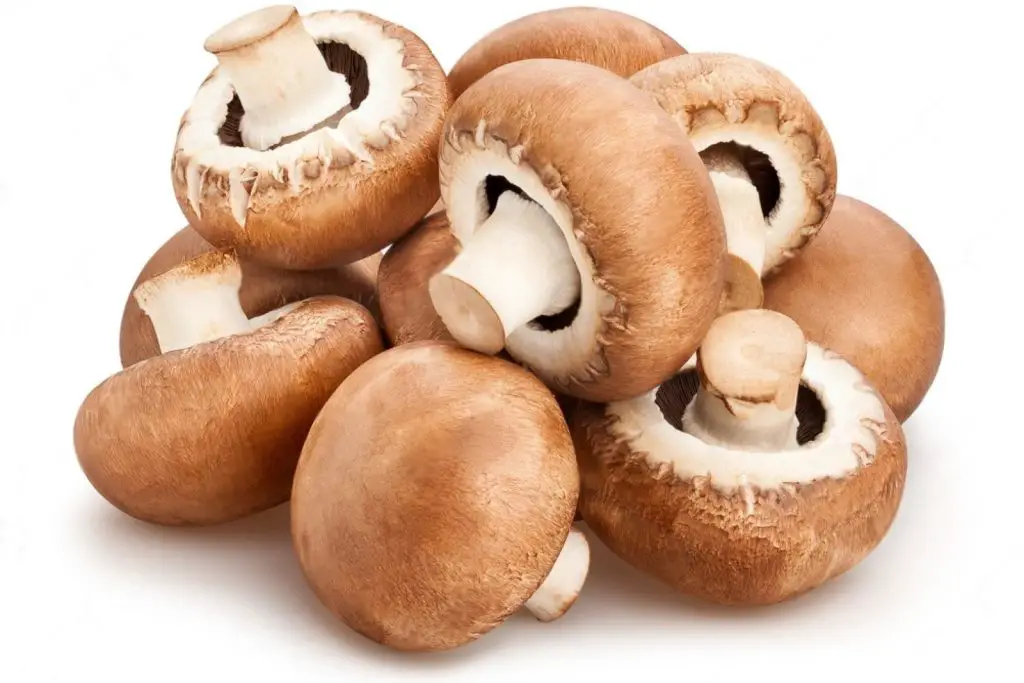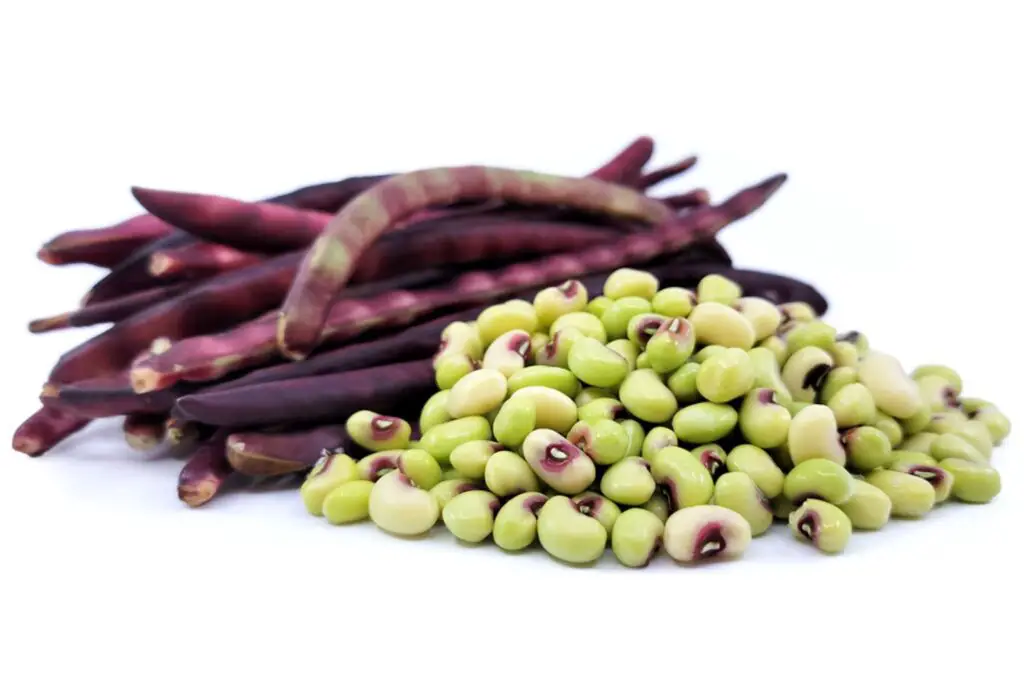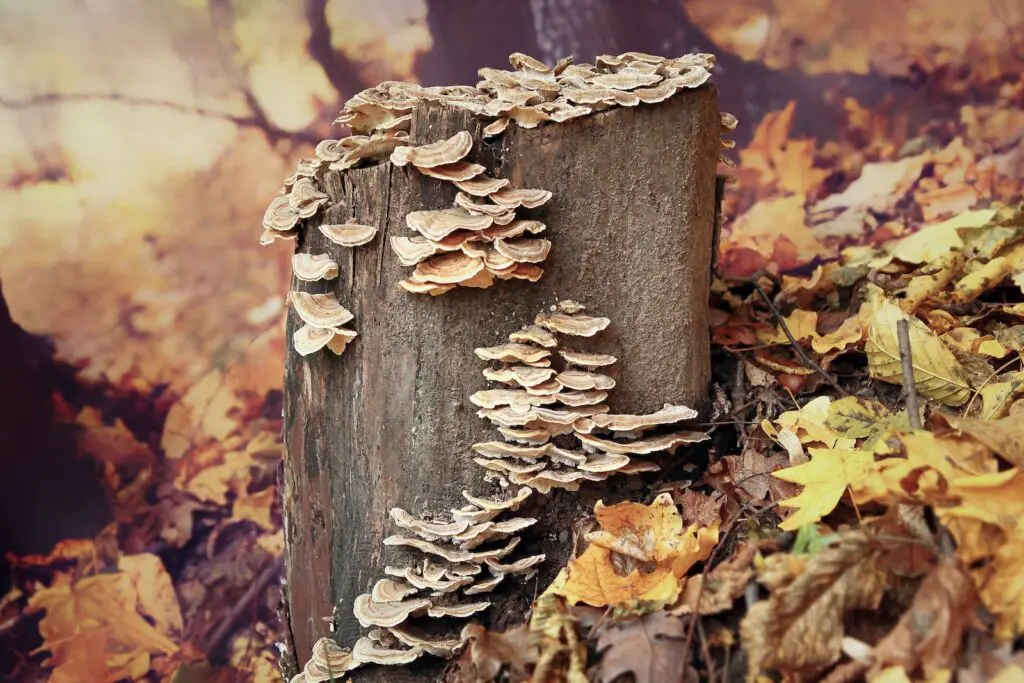
Bell peppers are a versatile and vibrant addition to many dishes, but what do you do when you have an abundance of them? Freezing bell peppers is an excellent solution to extend their shelf life and ensure you always have this nutritious vegetable on hand. Whether you grow your own or find a great deal at the grocery store, learning how to freeze bell peppers correctly will help preserve their taste, texture, and color for future culinary adventures.
Here are the simple steps to freeze bell peppers:
Step 1: Select and Prepare
Selecting and preparing bell peppers is a crucial step before freezing them, as it ensures that you are working with fresh and high-quality produce. Here’s a detailed explanation of this process:
- Choosing the Right Bell Peppers: When selecting bell peppers for freezing, it’s essential to pick firm and ripe peppers that are free from any blemishes, soft spots, or signs of decay. These characteristics indicate that the peppers are at their peak freshness, which will result in better flavor and texture after freezing. You can choose bell peppers of any color, such as red, yellow, or green, as all varieties freeze well.
- Washing the Peppers: Before handling the bell peppers, wash them thoroughly under cool running water. This step helps remove any dirt, debris, or residue from the surface of the peppers. Gently rub the peppers with your fingers to ensure all sides are clean.
- Removing Stems, Seeds, and Membranes: Once the bell peppers are clean, it’s time to remove the stems, seeds, and membranes. Start by cutting off the top part of the pepper where the stem is attached. Then, slice the pepper in half lengthwise. Use a knife or your fingers to carefully remove the seeds and the white membranes inside the pepper. These parts can be bitter and affect the quality of the frozen peppers, so it’s essential to remove them.
By following these steps to select and prepare bell peppers, you ensure that you have fresh, blemish-free peppers and remove any undesirable parts before freezing. This sets the foundation for preserving the quality, taste, and texture of the bell peppers throughout the freezing process.
Is it necessary to remove the seeds and membranes before freezing bell peppers?
It is generally recommended to remove the seeds and membranes before freezing bell peppers. The seeds and membranes can contribute to a bitter taste and alter the texture of the peppers during the freezing process. By removing them, you can ensure a more enjoyable culinary experience when using frozen bell peppers in various recipes.
Step 2: Blanch the Bell Peppers
Blanching is an essential step in freezing bell peppers because it helps preserve their texture, color, and nutritional value. Here’s a detailed explanation of why blanching is crucial and how to do it:
- Preserving Texture: Blanching bell peppers involves briefly immersing them in boiling water, followed by immediate cooling. The hot water blanches the peppers, which inactivates enzymes that can cause texture changes, such as softening or toughening, during freezing. By blanching, you can maintain the crispness and firmness of the bell peppers, ensuring a more enjoyable texture when you use them later.
- Retaining Color: Blanching also helps retain the vibrant color of bell peppers. The heat of the boiling water stops the enzyme activity responsible for color degradation. This process helps the peppers keep their natural brightness and appealing visual appeal, making your dishes visually enticing even after freezing.
- Preserving Nutritional Value: Blanching is effective in preserving the nutritional value of bell peppers. While some nutrients may be lost during blanching, the process helps retain a significant portion of vitamins and minerals. By blanching briefly, you can minimize nutrient loss while still ensuring the safety and quality of the frozen peppers.
How to blanch bell peppers effectively?
By blanching bell peppers before freezing, you can maintain their desired texture, vibrant color, and nutritional value. This step ensures that the peppers retain their overall quality and freshness when you’re ready to use them in your favorite recipes.
- Fill a large pot with water and bring it to a rolling boil. Make sure the pot is large enough to accommodate the peppers and allow for free movement during blanching.
- While the water is boiling, prepare a bowl of ice water. This will be used to cool down the blanched peppers quickly.
- Submerge the prepared bell peppers into the boiling water. The blanching time depends on the size of the peppers: smaller peppers may need around 2 minutes, while larger ones may require up to 3 minutes. The goal is to heat the peppers thoroughly without overcooking them.
- After the appropriate blanching time, remove the peppers from the boiling water using a slotted spoon or tongs, and immediately transfer them to the ice water bath. The ice water stops the cooking process by rapidly cooling the peppers.
Step 3: Dry and Pack
After blanching and cooling the bell peppers, the next step is to dry them and properly pack them for freezing. Here’s a detailed explanation of the drying and packing process:
- Drying the Bell Peppers: Remove the blanched bell peppers from the ice water bath and transfer them to a clean kitchen towel or paper towel. Gently pat them dry to remove any excess moisture. Drying the peppers helps prevent ice crystals from forming during freezing and ensures better texture and quality when thawed later.
- Choosing the Freezing Method: Decide whether you want to freeze the bell peppers whole, sliced, or diced, based on your preferences and anticipated usage. Freezing them in the desired form will make meal preparation more convenient in the future. For example, sliced or diced bell peppers can be easily added to stir-fries or recipes that require pre-cut vegetables.
- Packing the Bell Peppers: Place the prepared bell peppers into freezer-safe bags or airtight containers. Ensure that the packaging you choose is specifically designed for freezing to maintain the best quality. It’s important to leave some space at the top of the bags or containers to allow for expansion as the peppers freeze. This prevents the packaging from bursting or being damaged.
- Removing Excess Air: Before sealing the bags or containers, try to remove as much excess air as possible. This helps minimize the risk of freezer burn and maintains the quality of the bell peppers. One method to remove air from bags is to gently press on the bag while sealing it, allowing the air to escape through a small opening until the bag is tightly sealed. For airtight containers, ensure that the lids are securely closed.
By following these steps to dry and pack the bell peppers, you ensure that they are properly prepared for freezing. Drying removes excess moisture, and proper packing in freezer-safe bags or containers protects the peppers from freezer burn and maintains their quality. This way, when you’re ready to use the frozen bell peppers, they will be in excellent condition for your culinary creations.
Can I freeze bell pepper slices or should I freeze them whole?
You can freeze bell pepper slices or freeze them whole, depending on your preferences and intended use. Freezing bell pepper slices allows for convenient portioning and easier incorporation into dishes like stir-fries or fajitas. On the other hand, freezing them whole preserves their shape and texture better, making them suitable for stuffing or grilling after thawing. Choose the freezing method that aligns with your desired cooking applications for the best results.
Step 4: Label and Store in the Freezer
Labeling and storing the frozen bell peppers correctly is essential for easy identification, organization, and maintaining their quality over time. Here’s an explanation of the labeling and storing process:
- Labeling the Bags or Containers: To avoid confusion, it’s important to label each bag or container that contains frozen bell peppers. Use a waterproof marker or labels to clearly write the date of freezing and the contents. This information will help you keep track of the freshness of the bell peppers and ensure that you use the oldest ones first. Additionally, if you have different types of bell peppers (e.g., red, yellow, green), labeling them will allow you to easily identify and choose the desired variety when needed.
- Removing Excess Air and Sealing: Before sealing the bags containing the bell peppers, make sure to remove any excess air. Excess air can cause freezer burn and deteriorate the quality of the peppers. To remove air from bags, gently press on the bag while sealing it, allowing the air to escape through a small opening until the bag is tightly sealed. For airtight containers, ensure that the lids are securely closed, minimizing air exposure.
- Storing in the Freezer: Place the labeled and sealed bags or containers of bell peppers in the freezer. It’s recommended to initially store them in a single layer until fully frozen. This allows for faster and more even freezing of the peppers. Once the bell peppers are frozen solid, you can stack or organize them as desired to save space in the freezer.
By labeling each bag or container and removing excess air before sealing, you can easily identify and maintain the quality of your frozen bell peppers. Properly storing them in the freezer, initially in a single layer and later stacked or organized, helps optimize space utilization while ensuring easy access when you need them for your culinary endeavors.
Step 5: Thaw the Frozen Bell Peppers
Thawing and using frozen bell peppers can be done in different ways depending on your cooking preferences. Here’s an explanation of the thawing and usage process:
- Cooking Frozen Bell Peppers: If you plan to cook the frozen bell peppers, there’s no need to thaw them beforehand. You can directly remove the desired amount of frozen peppers from the freezer and add them directly to your recipes. The heat from the cooking process will thaw and cook the peppers simultaneously. This method works well for recipes such as soups, stews, stir-fries, or any dish that involves cooking bell peppers.
- Thawing Bell Peppers for Uncooked Dishes: If you prefer to use thawed bell peppers for uncooked dishes like salads or salsas, you can transfer the needed quantity from the freezer to the refrigerator. Place the frozen bell peppers in a bowl or container and allow them to defrost in the refrigerator overnight. Thawing them slowly in the refrigerator helps maintain their texture and flavor.
- Storage and Usage of Thawed Bell Peppers: Once the bell peppers have thawed, it’s best to use them within a couple of days for optimal quality. Store the thawed bell peppers in a covered container in the refrigerator until you’re ready to use them. It’s important to note that thawed bell peppers might become slightly softer compared to fresh peppers, so they are best suited for recipes where the texture is less critical, such as cooked dishes or salads.
Following these thawing methods, you can use your frozen bell peppers according to your specific recipe needs. Whether you choose to cook them directly from frozen or thaw them for uncooked dishes, these methods ensure that you can enjoy the flavors and versatility of bell peppers even after they have been frozen.
Other related questions
How long do frozen bell peppers last in the freezer?
Frozen bell peppers last around 10-12 months in the freezer. Blanch them, pack them tightly in airtight containers, and label them with the date. Thaw gradually or use directly in cooked dishes. Note that the texture may soften after thawing.
Can you refreeze bell peppers?
It is generally not recommended to refreeze bell peppers once they have been thawed. When bell peppers are thawed, their texture and quality may be compromised, and refreezing can further deteriorate these aspects. It is best to plan and use the desired amount of bell peppers from the freezer to avoid the need for refreezing and to ensure optimal taste and texture.
How do I know if the bell peppers have gone bad after being frozen?
To determine if bell peppers have gone bad after being frozen, there are a few signs to look for. Check for noticeable changes in color, texture, and smell. If the bell peppers appear discolored, mushy or have an off-putting odor, it is likely an indication of spoilage. Additionally, taste a small piece to assess if there is any unusual or unpleasant flavor. When in doubt, it is safer to discard bell peppers to avoid the risk of consuming spoiled food.
Can I freeze bell peppers of different colors together?
Yes, you can freeze bell peppers of different colors together. The color variations in bell peppers indicate differences in ripeness and flavor but do not affect their freezing properties. Freezing mixed colors together allows for convenience and versatility when using the peppers in future recipes.
Can I freeze bell peppers that are already cooked?
Yes, you can freeze bell peppers that have already been cooked. Cooked bell peppers can be frozen, but it’s important to cool them completely before packaging to avoid condensation and potential freezer burn. Properly store the cooked bell peppers in airtight containers or freezer-safe bags, and they can be stored in the freezer for several months.
Are there any alternative methods for freezing bell peppers?
While the most common method for freezing bell peppers is to blanch them before packing, there are alternative methods you can explore. One alternative is to freeze bell peppers without blanching by cutting them into desired shapes and directly placing them in freezer-safe containers or bags. Another option is to roast or char the bell peppers before freezing, which can enhance their flavor and provide a different texture when used in recipes. Experimenting with different freezing methods can offer unique culinary possibilities.
How do I prevent freezer burn when freezing bell peppers?
To prevent freezer burn when freezing bell peppers, proper packaging is essential. Ensure the bell peppers are completely dry before packaging them in airtight containers or freezer-safe bags, removing any excess air. Wrapping them tightly in plastic wrap or aluminum foil before placing them in the freezer-safe packaging can provide an extra layer of protection against freezer burn. Properly sealed and protected bell peppers will maintain their quality and taste for an extended period in the freezer.








